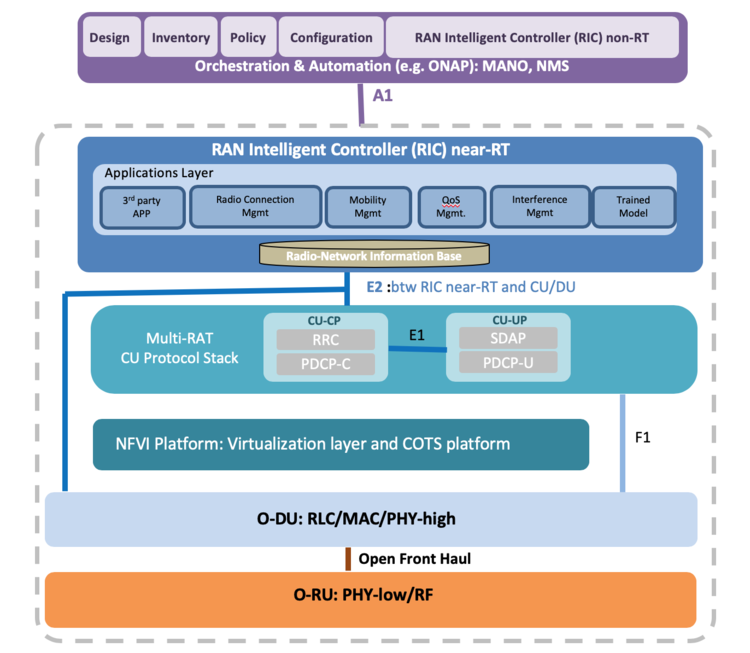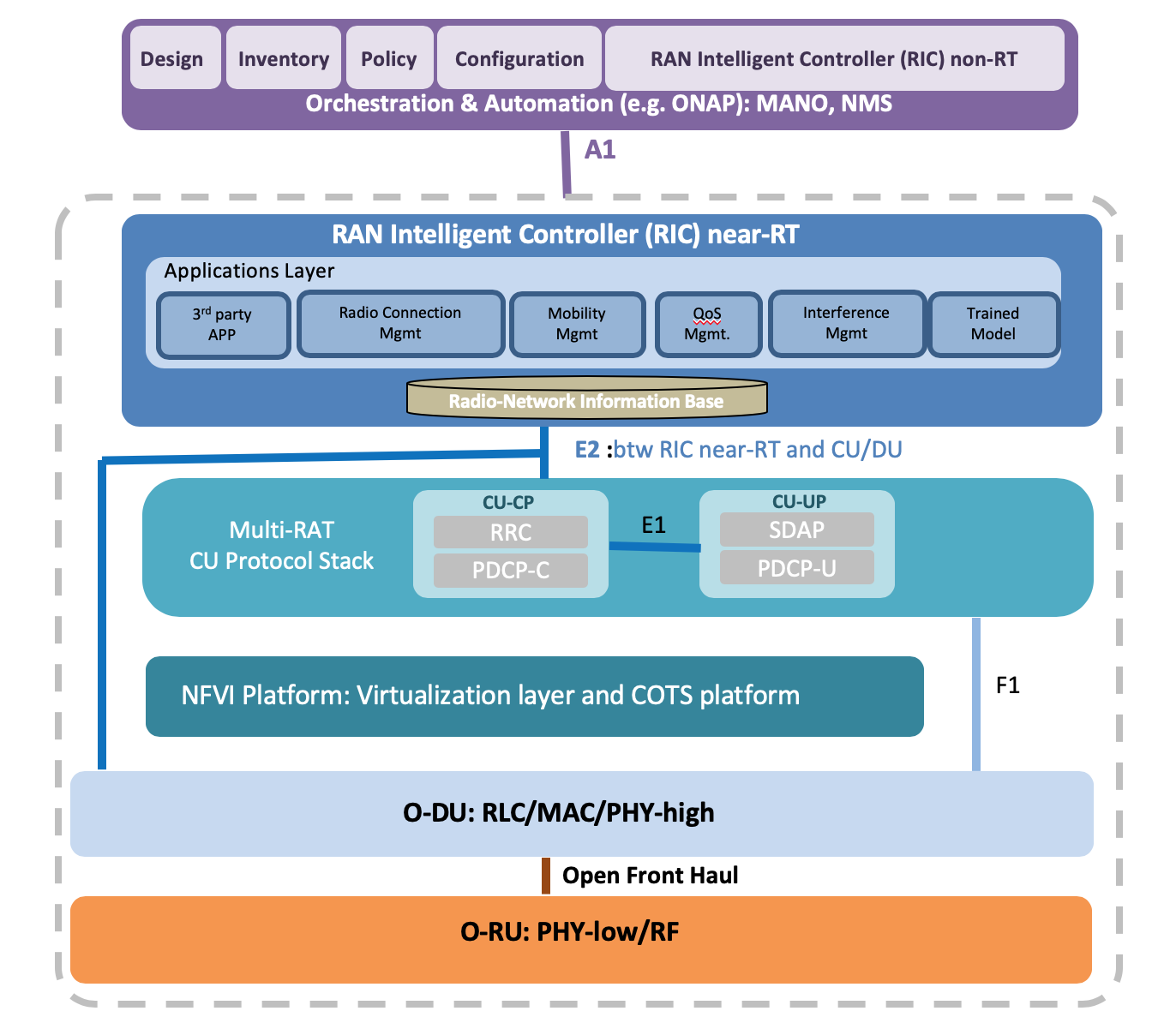Altiostar
Mavenir and Altiostar Collaborate to Deliver OpenRAN Radios for U.S. Market; Parallel Wireless CEO Opinion
Mavenir and Altiostar are among a number of networking software start-ups focusing on delivering Open RAN solutions to wireless network operators . Both companies specialize in cloud telecoms software – so one would expect them to be competing with each other. However, they have decided to collaborate to deliver a wide portfolio of radios based on OpenRAN principles for the US market.
Both companies will be supporting the development of radios through third party OEM’s that will be based on O-RAN open interfaces and will address the frequencies of Tier-1 and Regional/Rural operators in the US.
Analysis:
The two companies will NOT design or build the radios themselves, which is not within the scope of networking software startups. In essence, they will be using O-RAN compliant radios built by (mostly Asian) OEMs/ODMs- many of which are members of the O-RAN Alliance. One has to wonder, however, why such an agreement is necessary? Why aren’t O-RAN compliant interface specifications complete and well enough accepted to ensure multi-vendor interoperability?
The joint press release answers those questions:
“Very few companies are participating in the current (OpenRAN) supply chain and mostly offering proprietary radio solutions lacking open interfaces that are not interoperable with other network elements. In addition, the requirement to procure products from trusted vendors in the US market is also causing operators to reconsider supplier options. OpenRAN radios provide new possibilities for operators to implement a secure, cost effective and best of breed solution as networks move to 5G and beyond.”
Parallel Wireless CEO Steve Papa commented to Light Reading that Open RAN (aka O-RAN) “will only be as good as the radios that are available,” he said. “If Ericsson and Nokia are struggling to be competitive with Huawei’s radios, we should not expect O-RAN to magically solve this problem by using the same semiconductors available to Ericsson and Nokia at present.”
Papa blames a lack of U.S. semiconductor innovation for Huawei’s lead in radios. He has repeatedly urged U.S. authorities to pump an extra $1 billion into radio semiconductor research. He has even suggested using the $1 billion the US recently fined Ericsson for corruption, a remark that is unlikely to win him many friends in Stockholm.
………………………………………………………………………………………………………………………………………………..
As part of this effort, it is also planned to have these radios available to support the Secure and Trusted Communications Networks Act that was signed into law on March 12, 2020.
Public Law No: 116-124 (03/12/2020)
Secure and Trusted Communications Networks Act of 2019
This bill establishes (1) a mechanism to prevent communications equipment or services that pose a national security risk from entering U.S. networks, and (2) a program to remove any such equipment or services currently used in U.S. networks.
Specifically, the bill prohibits the use of certain federal funds to obtain communications equipment or services from a company that poses a national security risk to U.S. communications networks. The Federal Communications Commission (FCC) must publish and maintain a list of such equipment or services.
Each communications provider must submit an annual report to the FCC regarding whether it has purchased, rented, leased, or otherwise obtained any prohibited equipment and, if so, provide a detailed justification for such action.
The bill also establishes the Secure and Trusted Communications Networks Reimbursement Program to supply small communications providers (i.e., providers with 2 million or fewer customers) with funds to offset the cost of removing prohibited equipment or services from their networks and replacing it with more secure communications equipment or services.
In addition, the National Telecommunications and Information Administration must establish a program to share information regarding supply chain security risks with trusted communications providers and suppliers.
For a short video describing O-RAN’s progress, see www.o-ran.org/videos
……………………………………………………………………………………………………………………………………………
“Altiostar has been at the forefront of the OpenRAN movement that is now being embraced by mobile operators around the world,” said Ashraf Dahod, CEO of Altiostar Networks. “Our collaboration with Mavenir on OpenRAN radios will ensure operators in the US have a truly open end-to-end infrastructure that will be cost effective and allows them to grow their business.”
“We are collaborating with Altiostar to realize the full promise of OpenRAN. Our Radios will have O-RAN compliant interfaces and will interwork with other vendors’ solutions,” said Pardeep Kohli, President and CEO of Mavenir. “I encourage other companies in the OpenRAN Policy Coalition to open their radios and ensure a broad supply of radios with open interfaces that are interoperable with third party equipment.”
Mavenir and Altiostar have committed to work together to develop a full set of FCC banded radios to be available starting June 2020, with a complete set of radios in the market by Q1 2021. The parties are also committed to making these OpenRAN radios available to be sourced by all OpenRAN vendors and system integrators, widening the OpenRAN supply chain in the US market to meet the frequency band needs of Tier-1 and Regional/Rural operators.
Mavenir and Altiostar have been pioneers of OpenRAN, including founding board members of the Open RAN Policy Coalition, as well as part of the Telecom Infra Project (TIP) and O-RAN Alliance.
Members of the Open RAN Policy Coalition include Airspan, Altiostar, AT&T, AWS, Cisco, CommScope, Dell, DISH Network, Facebook, Fujitsu, Google, IBM, Intel, Juniper Networks, Mavenir, Microsoft, NEC Corporation, NewEdge Signal Solutions, Nokia, NTT, Oracle, Parallel Wireless, Qualcomm, Rakuten Mobile, Samsung Electronics America, Telefónica, US Cellular, US Ignite, Verizon, VMWare, Vodafone, World Wide Technology, and XCOM-Labs.
Other software start-ups that are pursuing Open RAN include Parallel Wireless, Robin io., WiSig Networks, and several others. This author has talked with principals of Robin.io and WiSig who have been invited to write guest articles about their work for the IEEE Techblog.
Below is the O-RAN reference architecture model:

…………………………………………………………………………………………………………………………………..
About Mavenir:
Mavenir is the industry’s only end-to-end, cloud-native Network Software and Solutions/Systems Integration Provider for 4G and 5G, focused on accelerating software network transformation for Communications Service Providers (CSPs). Mavenir offers a comprehensive end-to-end product portfolio across every layer of the network infrastructure stack. From 5G application/service layers to packet core and RAN, Mavenir leads the way in evolved, cloud-native networking solutions enabling innovative and secure experiences for end users. Leveraging innovations in IMS (VoLTE, VoWiFi, Advanced Messaging (RCS)), Private Networks as well as vEPC, 5G Core and OpenRAN vRAN, Mavenir accelerates network transformation for more than 250+ CSP customers in over 140 countries, which serve over 50% of the world’s subscribers.
Mavenir embraces disruptive, innovative technology architectures and business models that drive service agility, flexibility, and velocity. With solutions that propel NFV evolution to achieve web-scale economics, Mavenir offers solutions to help CSPs with cost reduction, revenue generation, and revenue protection. www.mavenir.com
About Altiostar:
Altiostar provides a 4G and 5G open virtualized RAN software solution that supports open interfaces and disaggregates the hardware from the software to build a multi-vendor web-scale network. This solution supports indoor and outdoor massive MIMO, as well as macro and small cells, enabling interference management, carrier aggregation and dual connectivity to improve the efficiency of the network. It also enhances the Quality of Experience for the end user, while providing broadband speeds. Operators can add intelligence, quickly adapt the software for different services and automate operations to rapidly scale the network and reduce Total Cost of Ownership (TCO). The Altiostar open vRAN solution has been deployed globally, including the world’s first cloud native-mobile network with Rakuten in Japan. www.altiostar.com
……………………………………………………………………………………………………………..
References:
Ultra Oxymoron: GSMA teams up with O-RAN Alliance without liaison with 3GPP or ITU
Altiostar testing O-RAN Compliant 5G Massive MIMO with NEC and Rakuten Mobile
Altiostar announced testing of massive MIMO 5G over a virtual Radio Access Network (vRAN) in collaboration with NEC and Rakuten Mobile. The tests aim to ensure interoperability of multi-vendor systems based on the open RAN specifications from the O-RAN alliance.

Open RAN Layered Architecture from the O-RAN Alliance
……………………………………………………………………………………………………………………………….
Altiostar is integrating the O-RAN Distributed Unit (O-DU) functionality of its virtual radio access network (vRAN) software with NEC’s O-RAN Radio Unit (O-RU) using fully compliant control, user, synchronization and management (C/U/S/M) plane protocols based on O-RAN Alliance guidelines. The 5G layer is built using container network functions (CNF) that leverage Rakuten Mobile’s cloud infrastructure platform that is part of its 4G network build out.
As part of management-plane integration, Altiostar is following a hierarchical model that allows the O-DU software to manage the NEC O-RU, including providing software upgrades, RU configuration, fault management and performance monitoring. This interoperability is being performed for 5G new radio (NR) sub-6 GHz massive MIMO O-RU and meets all the 3GPP downlink/uplink (DL/UL) requirements.
Altiostar says they have “pioneered RAN disaggregation since 2013 when it first introduced a split between the higher non-real-time layers of the protocol stack and the lower layers of the stack. The industry then standardized this concept in the 3GPP and what is now known as the option-2 split between the centralized unit and the distributed unit. This paved the way for operators to think differently when it comes to disaggregation and network deployment,” according to Altiostar.
Further disaggregation was introduced by Altiostar in the form of a radio interface unit. The RIU incorporates lower L1 functionality and provides a gateway function that converts Common Public Radio Interface to/from Ethernet. By eliminating the high bandwidth and proprietary CPRI interface to the radio, Altiostar took a key step towards integrating legacy Remote Radio Head over an Ethernet transport network to O-DU functionality.
Using this technology, the first multi-vendor RAN was deployed at a commercial scale and paved the way for operators to engage radio vendors to build O-RAN compliant radios. Rakuten Mobile’s adoption of the platform has helped move forward the ecosystem and open interfaces in the industry.
“Open RAN as a concept is one that the whole industry is now actively pursuing as a means to introduce supply chain diversity into mobile networks globally,” said Ashraf Dahod, CEO of Altiostar Networks. “Altiostar is leading the industry with this network transformation by ensuring interoperability, integration and most importantly extensive testing to ensure that we have a commercial, carrier-grade solution for both 4G and 5G while keeping the principles of Open RAN in place.”
“Rakuten Mobile is a big supporter of O-RAN principles and has seen the benefit of supply chain diversity in our own network,” said Tareq Amin, Representative Director, Executive Vice President and Chief Technology Officer of Rakuten Mobile. “By combining the spectral efficiency of massive MIMO along with an advanced cloud-based RAN, we are leveraging and introducing advanced innovative technology from both NEC and Altiostar, who are specialists in these respective fields.”
…………………………………………………………………………………………………………………………………..
References:


